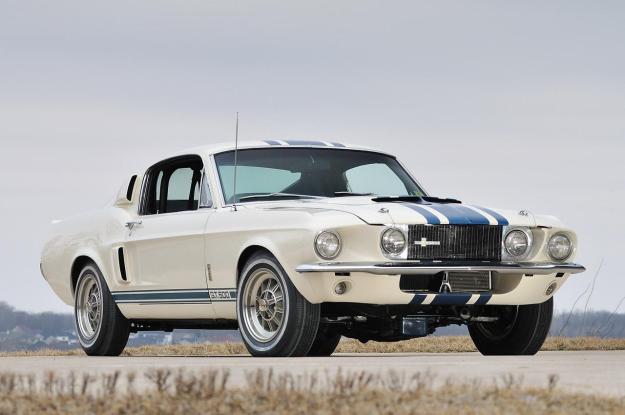
There’s no way to split it: pony cars are just cool. But are they worth the price that some wealthy baby boomers will pay for them? That’s debatable.
Last year a 1965 Shelby GT350R Mustang sold at auction for $1 million, which made it –at the time – the most expensive Mustang ever. Shockingly, the vehicle you see above has upstaged it: a one-of-one 1967 Shelby GT500 Super Snake.

It’s a rare beast for sure. Under the hood, the motoring masters at Shelby bolted a 427 cubic-inch V8 from a Ford GT40 racecar.
Shelby had planned to build 50 of the ’67 Super Snakes but the $8,000 asking price scared off any interested parties despite the fact that the one-off Snake would be the fastest car Shelby would build in the 1960s, according to Mustangs Daily.

So what does something like that go for? One Mecum auction attendee spent $1.3-million for the Super Snake – plus a seven-percent seller’s commission.
There’s no denying the cool factor of a car like the ’67 Snake but is it $1.3-million cool? Let’s think about that.

While they’re in no way comparable in performance or refinement, a motoring enthusiast can pick up a Pagani Huayra for around that money, if not a bit less. Sure, the Huayra might kill you just like the Snake might but in it you’ll reach the pearly gates at a much higher top speed.
If you’re like us and find yourself shaking your head at the idea of a Mustang fetching over $1 million, you need not do much more than wait for the prices to come back down. As the folks who grew up idolizing these cars begin to leave the auction market, we wager the prices they fetch will also drop off.
If you had $1.3-million to spend on a sports car, what would you get? Tell us in the comments.
Photo credit: Mustangs Daily
Editors' Recommendations
- Why Ford chose a dual-clutch transmission for the Shelby GT500 Mustang
- This 600-horsepower 2019 Shelby GT-S Mustang is the ultimate rental car


